These are the 25 best moments in the history of manga: ‘One Piece’, ‘Berserk’, ‘Dragon Ball’ and more
We choose the best arcs, sagas and moments in the history of manga and anime, the essential plots that have shaped the genre.
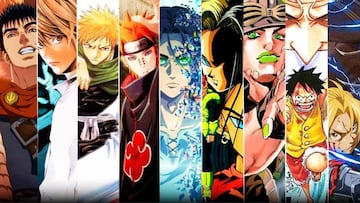
Who hasn’t been there? Who hasn’t been recommended a show, watched a little, threatened to quit, and then been told “you’ve got to stick it out until this point”? Sometimes it’s until a certain episode, sometimes it’s until a certain season. A lot of well-meaning friends don’t want us to stop digging right before the diamonds show up, or at least what they interpret as diamonds. In the case of manga and anime, things are even worse because their stories are unevenly divided into sagas and arcs. They are made up of so many pieces that it is difficult to interpret which are the good ones and which are filler, rehash, or passing through our lives.
That’s what we want to help you with today. We have compiled the 25 best moments in the history of manga, choosing the 25 best arcs, sagas or seasons. It’s an eclectic list that focuses on the biggest names in the genre, almost tempting us to say the typical “if you don’t like it, we’ll give you your money back.” Simply put, if some of the following parts or plots don’t grab you, there is no better way to know that this manga or anime is not for you, because we are talking about its best parts. So let’s go with a list that will help you know where to stop, where to draw the line, and hopefully discover some new series to try your luck with. Enjoy.
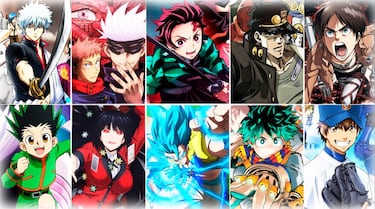
1. Golden Age (‘Berserk’)
It is said that death is the mother of beauty, and that is why beauty is terror. That things are beautiful because they end, and that beauty is rarely gentle or comforting. On the contrary. We often tremble before what we call beautiful, because true beauty is always quite awe-inspiring. The Golden Age Arc, the second story arc of Berserk, is just that. Beautiful and terrifying.
Focusing on Guts’ childhood and youth, it presents us with a vision of the world unknown in the rest of the work. A lighter version, dreamy and full of hope, reflecting the soul of the young man at that time. But one day, violence and trauma invade everything. Loss suffocates this world and the difficult search for Guts’ place in the world begins.
Berserk’s Golden Arc always makes our hair stand on end for the delicacy with which it crushes our hearts. It is the fall of an ideal world that is suddenly populated by nightmarish creatures capable of tarnishing everything. A tragedy full of death, but also full of life and beauty. The day we understood Guts and were captivated by ‘Berserk’ for life.
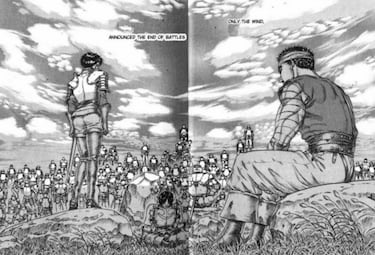
2. The Chimera Ant (‘Hunter x Hunter’)
If anyone didn’t understand why there was so much nervousness before the return of ‘Hunter x Hunter’, or when its ending was revealed in case the author died, the only way to help them understand is to give them this arc to read. Not only does it have some of the best fights in the series and in manga history, but it is also an essay on the human condition.
It is common knowledge that a story is only as good as its villains, and Meruem is living proof of that. The Chimera Ant arc and its main antagonist could not be bettered. One of those characters you start out despising and end up loving. Beginning, middle and end are perfect. His character development is flawless. With a dark background of nuclear war and gore, this saga took Shōnen to a new level and left a void in us that we have never been able to fill.
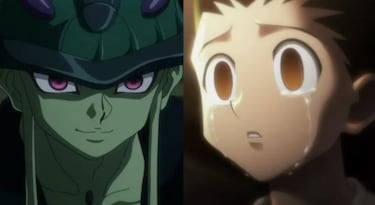
3. Light vs. L (‘Death Note’)
It may not be an arc, strictly speaking, but in ‘Death Note’ there is a before L and an after L. When this modern Sherlock Holmes with his pronounced dark circles, squatting posture and obsession with sweets gets out of the way, Tsugumi Ōba’s manga loses too much. But the thing is, ‘Death Note’ is an incomparable masterpiece up until that moment.
The tug-of-war between Kira and L is similar to the tug-of-war between mangaka and reader. A gripping thriller in which no matter how hard you try, you are always ten steps behind characters who are too brilliant for their own good. Even the conclusion of the arc is perfect in its own way, no matter how much its implications hurt us and how much they weigh down “Death Note”, whose plot never recovers. Light vs. L is the best chess match ever seen in a manga.
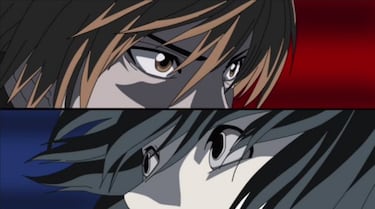
4. The Promised Day (‘Fullmetal Alchemist: Brotherhood’)
It is difficult to divide ‘Fullmetal Alchemist: Brotherhood’ into arcs because part of its grace was how quickly it changed from one to another and how they all mixed and merged, like pure alchemy. Still, The Promised Day and the final battle deserve special mention and treatment.
To think of “The Promised Day” is to feel a lump in your throat. It makes you want to burst into tears. If someone told us that all the chuster endings we’ve seen in our lives would be exchanged for the ending of ‘Fullmetal Alchemist: Brotherhood, we’d probably never complain again. We’d all understand and sign up for it. It’s as round and deep as it is emotional. Perfect, brilliant.
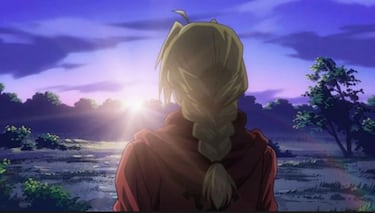
5. Summit War of Marineford (‘One Piece’)
Who would have thought that the best One Piece arc would be one in which half of the Straw Hats don’t appear? But that’s exactly what happens with Marineford, who is often inseparable from 3D2Y, Impel Down or Amazon Lily. Even on its own, the arc presents an endless string of arguments for sitting on the throne.
For starters, it allowed us to get up close and personal with all the legends of piracy we had been hearing about for years. It was the first meeting of admirals, shichibukais, and emperors. There were fights so short, random, and spectacular that many of them hadn’t even occurred to us in our wet dreams with Oda. And Luffy piled up one peak fiction scene after another. His arrival in Marineford from the sky, when he stops Crocodile and saves Whitebeard, the moment when he stands up to Akainu, Aokiji and Kizaru, his run-ins with Mihawk and Garp, the awakening of the Conqueror’s Haki... Not to mention the appearance of Shanks and the death which we talked to our psychologist about the most.
It was such a turning point in ‘One Piece’ that it split the series in two with the time jump.
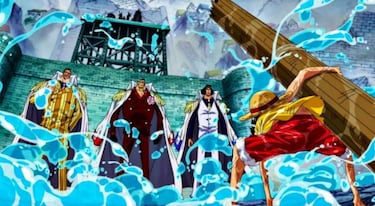
6. Pain’s Assault (‘Naruto Shippuden’)
Two words: Shinra Tensei. ‘Naruto’ hit a ceiling with Pain’s arc. How many times did it bring us to tears? Jiraiya’s story with Nagato, Konan and Yahiko. The sennin’s message to Naruto and how our protagonist received it. The resistance and the destruction of Konoha. Kakashi’s conversation with his father. The return to the village amidst cheers and disapproval, when the faces were not of joy but of rejection. Not to mention the training, the Hermit Mode and one of the best fights of the whole series: Naruto vs. the Six Pain. The climax of the Akatsuki saga is also the climax of the king of contemporary shōnen. Unforgettable.

7. Water 7 (‘One Piece’)
The arc of the fight between Usopp and Luffy. Robin’s “I want to live!” arc. The tearful farewell to the Merry, whose little voice we still remember thanking us and saying “I would have liked to take you a little further”. The first beating of the Mugiwara, the awakening of the Gear Second and Third, the power-ups for the whole team (Weather Tac, Monster Point...), the opening of Sogeking, the past of our favorite archaeologist and Franky joining the gang. Not to mention the challenge to the World Government, the premiere of a brand new Thousand Sunny or the very worthy representation of Cipher Pol, with a Rob Lucci still in our memories.
For arcs like Water 7 and Ennies Loby, the 1,000 chapters of One Piece are not enough.

8. War for Paradis (‘Shingeki no Kyojin’)
‘Shingeki no Kyojin’ is one of the few series that maintains a very high level from beginning to end. We could include any of its arcs, but if we are talking about the manga, we must undoubtedly stay with the last one. There are few works where the author improves and grows so much throughout the series.
Isayama, at first underestimated for his drawings, silenced mouths with panels that will go down in the annals of the history of the medium. Vignettes and pages that also told a perfect denouement, full of suspense, fair and generous to all the characters involved.
We came from a Marley arc that was already risky, surprising, and distinctly different from anything that had gone before, with a lot of symbolism rooted in the real world (the Holocaust, to be exact), but War for Paradis ended up shaping one of the best characters we have seen, for the development, for the moral debates it raises, and for the story of love and friendship that stars it. The climax of ‘Attack on Titan’ deserves all the praise it gets.

9. Androids and Cell Saga (‘Dragon Ball’)
It’s almost impossible to separate the success of Dragon Ball Z from the Frieza saga and everything that came with it, including the appearance of the Super Saiyan. But if we look up and look at the bigger picture, everything about the Android arc is in a different league.
As Tite Kubo, author of Bleach, said, there is no more shocking moment in the history of the manga than the arrival of Trunks from the future to warn of the danger of Android 17 and Android 18. There is the inhuman power of them, the inability of the Z-Warriors to face them without Goku... and a third element in the discord, a Cell that changed everything by adding some mystery to the story and raising the level of challenge.
The race for Cell’s perfect form, the Saiyan power escalation and of course Gohan’s unstoppable SSJ2 did the rest. The anime also added some of the best music in the series. Almost nothing.
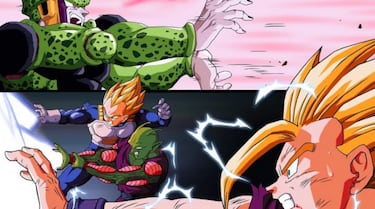
10. Sanctuary (‘Saint Seiya’)
No, although some people insist, it does not smell of mothballs. The arc of the 12 temples marked a generation, and no wonder. It was a real boss rush, with Masami Kurumada pushing all his heroes to the limit. Boss after boss and battalion after battalion, Seiya and company were taken to the edge of hell and forced to improve in order to come back alive.
Not only were they an unparalleled series of spectacular battles, but behind them was a great deal of character development. Seiya embraced his faith in Athena, Shiryu regained his sight, Hyoga stood up to his master in the name of friendship, Shun learned to give up everything so that if he fell, it would be with his head held high, and Ikki sacrificed everything for love. ‘Saint Seiya’ is one of the few series that manages to have so many characters in the chorus without raising their voices or hogging the spotlight.
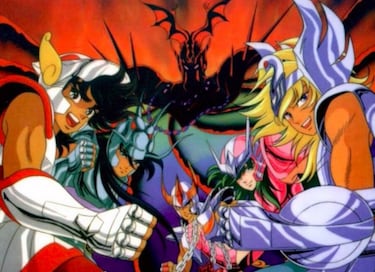
11. Shibuya Incident (‘Jujutsu Kaisen’)
We couldn’t be happier that the anime lived up to the manga, because the Shibuya Incident arc is one of the best moments not only of ‘Jujutsu Kaisen’, but of modern Shonen. It is the one that made Gege Akutami’s work the great successor of the big three (‘One Piece’, ‘Naruto’ and ‘Bleach’).
Few series would dare to blow up everything that came before. But as if it were a LEGO tower he was bored of, the mangaka tore down all the previous world-building, sweeping away our expectations and predictions to start from scratch. It was impossible to know where things would go.
The Prison Realm, Geto’s true identity, Shibuya in ruins because of Sukuna (who used Yuji’s body and marked him psychologically forever), a lot of wounded characters... or killed in battle. Page after page of battles drawn with an emotion and bravery to remember.
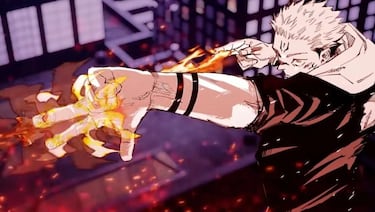
12. Chūnin Exams (‘Naruto’)
The Land of Waves arc made us fall in love with Naruto and Team 7, but it was the Chūnin Exams that introduced us to the rest of Konoha. And isn’t one of the greatest strengths of Kishimoto’s work that there are so many possible answers to the question of which character is your favorite?
Who’s eyes didn’t glaze over with Rock Lee vs. Gaara, Neji’s 64 Palms of Byakugan and Shikamaru’s intelligence? Not to mention the terrifying introduction of Orochimaru, the politics behind the villages, the death of the third Hokage, and the evolution of a Sasuke who awakens his cursed seal and learns his trademark chidori. A parade of techniques, strategies and excitement that showcased the diversity and depth of Naruto. If only college exams were like this.
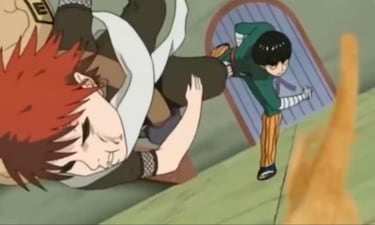
13. Soul Society (‘Bleach’)
The Rescue of Rukia Kuchiki was the saga that catapulted Bleach and made it one of the most popular Shonen at the turn of the century. Soul Society was intoxicating. A version of heaven we wanted to know every rule and explanation of how it worked.
The commanders and the various divisions. The word bankai, still able to make our skin crawl. One of the best twists in anime history. Those fights, memorable fights, between Ichigo and Byakuya, or between Kurosaki and Kenpachi, or between... in short, each and every one of their fights is worth remembering.
But it wasn’t all action. The Soul Society was also moving. We witnessed one personal story after another, dozens of flashbacks and scenes where it was impossible to hold back tears as Rukia accepted her death. Not to mention that it laid the foundation for the Arrancar saga. Tite Kubo at its best.
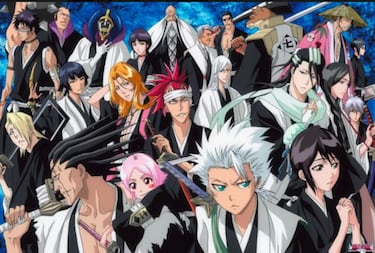
14. Conviction (‘Berserk’)
Another ‘Berserk’ arc? Well, yes, and we think it’s only a few. This time it’s the arc that introduced us to the Holy Iron Chain Knights as well as Serpico and Farnese. The one that had one of the most memorable villains of the manga (Mozgus) and the famous scene with the hedonistic orgy of the cult of Slan. It is one of the most similar arcs to the one that opens ‘Berserk’, The Black Swordsman, but with a Kentaro Miura already in his prime after the Golden Age arc.
Action-packed and gritty, Conviction had a lot at stake, including the resurrection of Griffith himself. The story allows the secondary characters (Luca, Jerome) to flourish and pushes Guts to the limit, to a series of a priori impossible battles in which not only forces but also ideals collide.
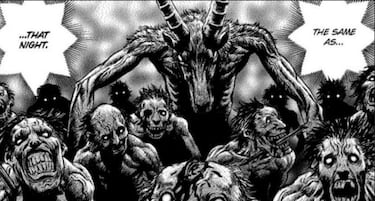
15. Second Yoshioka (‘Vagabond’)
To be honest, all the ‘Vagabond’ arcs are memorable in their own way (we still can’t get over the issue of his hiatus). The continuous mental and physical growth Musashi goes through in them makes them very hard to dismiss, but in our humble opinion, the best fights and most touching scenes in Takehiko Inoue’s work are to be found in this arc. The art took on an unprecedented power, as always without taboos, without fear of blood, nudity and the explicitness of a savage and cruel world. It carried the existentialist drama of its protagonist, Takezo/Mushashi, to the end and prepared us for two subsequent arcs that were also 10 out of 10.
The massacre, Yoshioka’s moment of introspection, Denshichiro as a rival, the 10 swords and Ueda’s cut.... Despite the fact that no one speaks badly of ‘Vagabond’, it is impossible to think that Inoue’s manga is overrated after reading this arc.
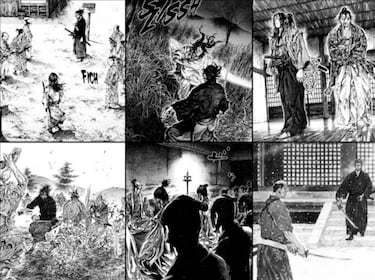
16. Post-High School / Aiko 2 (Oyasumi Punpun’)
It’s the dementor of manga. An emotional bear trap. ‘Oyasumi Punpun’ is one of Inio Asano’s many masterpieces, and its final section would provoke nightmares even for those who have forgotten the last time they cried or were afraid of anything.
Punpun’s story begins to resemble ‘Stand by Me’, Rob Reiner’s wonderful movie. Everything seems innocent and sweet. It makes us want to hug its characters and be their guide in a world too cruel for them. But then the time jumps begin (every two volumes, two years go by in their story) and chaos reigns. That’s being a teenager. This is growing up. Uncontrollable, hard, deadly. One is left with the hope that things will get better, that things will turn out well for our students in the end, and that we will return to the feelings of the beginning, to a manga about friendship and first love, but that never happens.
Aiko’s final arc is one of the most heartbreaking, overwhelming, and cathartic to ever pass through our hands. So painful that we still bleed and cry while hugging our pillows.
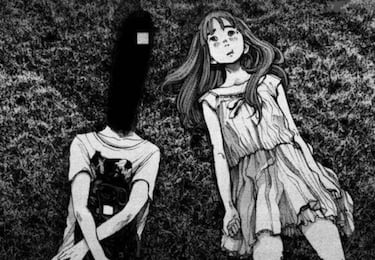
17. Tsukiyama Family Extermination Operation (‘Tokyo Ghoul’)
Often underrated, ‘Tokyo Ghoul’ not only has one of the best openings in the medium, but also an arc that deserves to be on this list. That of Commission of Counter Ghoul to eliminate all of the Tsukiyama, thus destroying the family’s powerful and influential business conglomerate.
A huge arc in which the operation soon gets out of control and we see a constant succession of fights, deaths and regrets, ending with the shocking revelation of Furuta and Kaneki’s Black Reaper form. Seeing Shuu’s newfound maturity and depth makes you feel like a proud parent, the story of Koori’s train stations with Hairu is to die for and the art throughout reflects the ruthlessness (not feelings) of human behavior, at least with more monsters than humans.
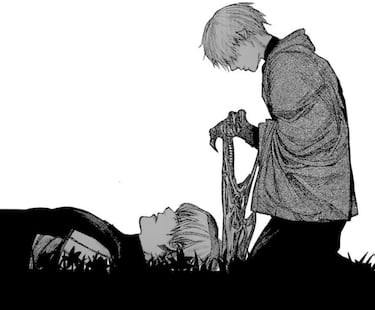
18. Yorknew City arc (‘Hunter x Hunter’)
And if ‘Berserk’ repeated itself, so should ‘Hunter x Hunter’. And in its case, with a wonderful saga, the first that began to show the darkness underlying Yoshihiro Togashi’s manga.
His reflections on revenge, poverty and abandonment served as a backdrop for the presentation of the series’ great antagonists, but especially for the star who hogged all the limelight: Kurapika. His confrontations with Chrollo and Uvogin, or with Silva and Zeno, are among the best fights in all of Yoshihiro Togashi’s work.
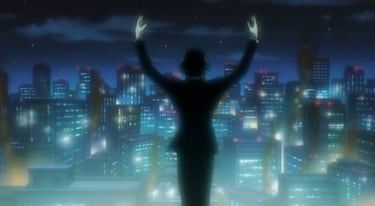
19. Red Ribbon Army Arc (‘Dragon Ball’)
When we talk about Dragon Ball, we cannot leave out one of the most intense and varied arcs of all: The Red Ribbon Army. Goku facing a whole army that wants to get all the Dragon Balls allowed us to experience some of the best moments of the series and the manga.
From the relationship established with Suno and the android number 8 to the hilarious ninja Murasaki, from the total adventure of Goku, Krylin and Bulma in the pirate cave with General Blue on their heels to the cameo of Arale or the unforgettable two-part battle with Tao Pai Pai. The story features unique characters, combat, exploration, humor and the evolution of a super Goku when he wants to help his own. Undoubtedly one of the great journeys left by Akira Toriyama’s original work.
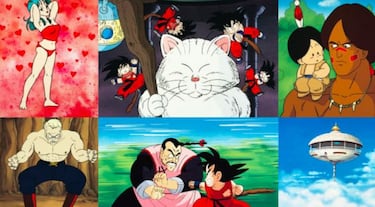
20. Ruhenheim (‘Monster’)
‘Monster’ is one of those anime that we will never stop recommending, and whose ending couldn’t have left a better taste in our mouths. Ruhenheim is actually that, a conclusion rather than an arc as such, but we had to include it in this list. An example of how to give each and every character the farewell they deserve, with satisfying answers to every question, every twist, and every change in the character’s personality.
A “thank you for your time” to the readers and viewers of Naoki Urasawa’s work. And strangely enough, Ruhenheim is the only fictional place in the whole work that actually makes sense. What could be better than a vague limbo to say goodbye to such a story and to bring Johan’s journey and hunt to an end.
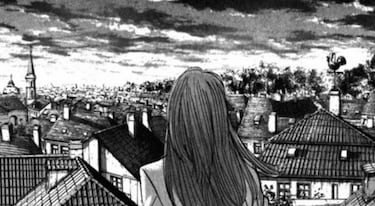
21. Infinity Castle (‘Kimetsu no Yaiba’)
We have no doubt that this arc, when it arrives (all information about it here), will break the internet, as they say nowadays. Without going into spoilers for those who are enjoying the anime these days, let’s just say that the Inifinito Castle arc, the penultimate arc of all ‘Kimetsu no Yaiba’, is a big (and calm, because it’s a long saga) farewell to a lot of characters whose adventures have thrilled us and made us laugh our asses off.
With all the slayers at their peak after the Hashira training, the Infinity Castle arc allows them to unleash their powers and contains some of the best fights in ‘Kimetsu no Yaiba’ (such as the one pitting Inosuke, Shinobu and Kanao against the fearsome Doma, the second most powerful demon in the entire series). It’s true that Koyoharu Gotouge’s work in the manga never shone as brightly as in the anime, but in terms of plot and moments, this arc is worth mentioning.

22. Bomb Girl arc (‘Chainsaw Man’)
Although the first season of the ‘Chainsaw Man’ anime left mixed feelings, MAPPA’s anime needs a continuation and a second chance, because what it would adapt would be the most representative arc of its entire history.
We refer to the arc of Bomb Girl, a character as dangerous and captivating as Makima. A new assistant for Denji who takes our protagonist from heaven to hell. Starting with a simple premise, the right amount of mystery and great interactions between characters, this saga has heartbreaking moments scattered here and there and the usual: the most breathtaking action sequences of recent years.
His great rival, Reze, is a devilish, scantily clad girl who blows up everything she touches. How do you fight that? Well, if you’re a man with a chainsaw for a head, you might have some ideas. There’s no way the irreverence of ‘Chainsaw Man’ won’t surprise you and force a smile to appear on your face.
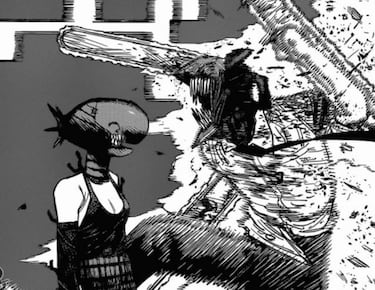
23. Steel Ball Run (‘Jojo’s Bizarre Adventure’)
Like a reboot of the entire series, Steel Ball Run transported us to an alternate universe where, as always, there were many familiar names and faces... acting in a very unfamiliar way. The plot told how Johnny Joestar, the alternate version of Jonathan Joestar, was doing in a horse race across the United States. And if that wasn’t crazy enough, the race soon became a head-to-head race against the President of the White House to see who could retrieve all the parts of the mummified body of Jesus Christ first.
Even wilder and more hilarious than you might think after reading these lines, Steel Ball Run is pure Jojo’s.
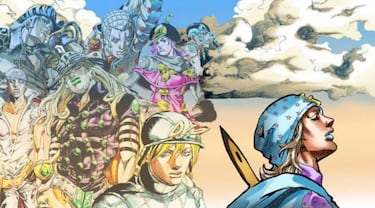
24. Shogun Assassination Arc (‘Gintama’)
The eighth saga of “Gintama” is neither the longest nor the most surprising in terms of plot, but it is one of the most complete and exciting of the series. Our protagonists had to defend the Shogun from the assassination plots that followed him, and they were soon involved in legendary battles such as Gintoki’s battle with Takasugi.
It may be a more serious arc than usual for the series known for its surrealism and jokes, or for its homages to other anime, but the Shogun Assassination arc simply transcended and endured in our memories. It is hard to mention Gintama and not remember it.
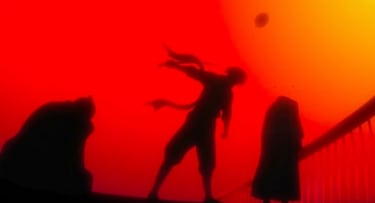
25. Spring High Preliminary Arc (‘Haikyuu!’)
Related stories
People don’t usually think of sports anime and manga when we talk about the best in history, and that’s kind of unfair. Certain parts of ‘Slam Dunk’ and ‘Captain Tsubasa’ will always be locked away in a little corner of our hearts. For this reason, we had to include some of them in the list, and for no other reason than to rub the noses of all the purists who reject the new, we will choose the currently trendy manga in the same genre, ‘Haikyuu!’
The Spring High arc (corresponding to season 3 of the anime) perfectly exemplifies how exciting the genre is with a new David vs. Goliath story. A new attempt by Hinata and Kageyama to bring Karasuno to the top, even if teams and players as high as the Japanese U-19 national team stand in their way. Uncomplicated, unpretentious. Fun, typical, and able to get us hooked even if we have never played volleyball in our lives (or intend to).



Complete your personal details to comment